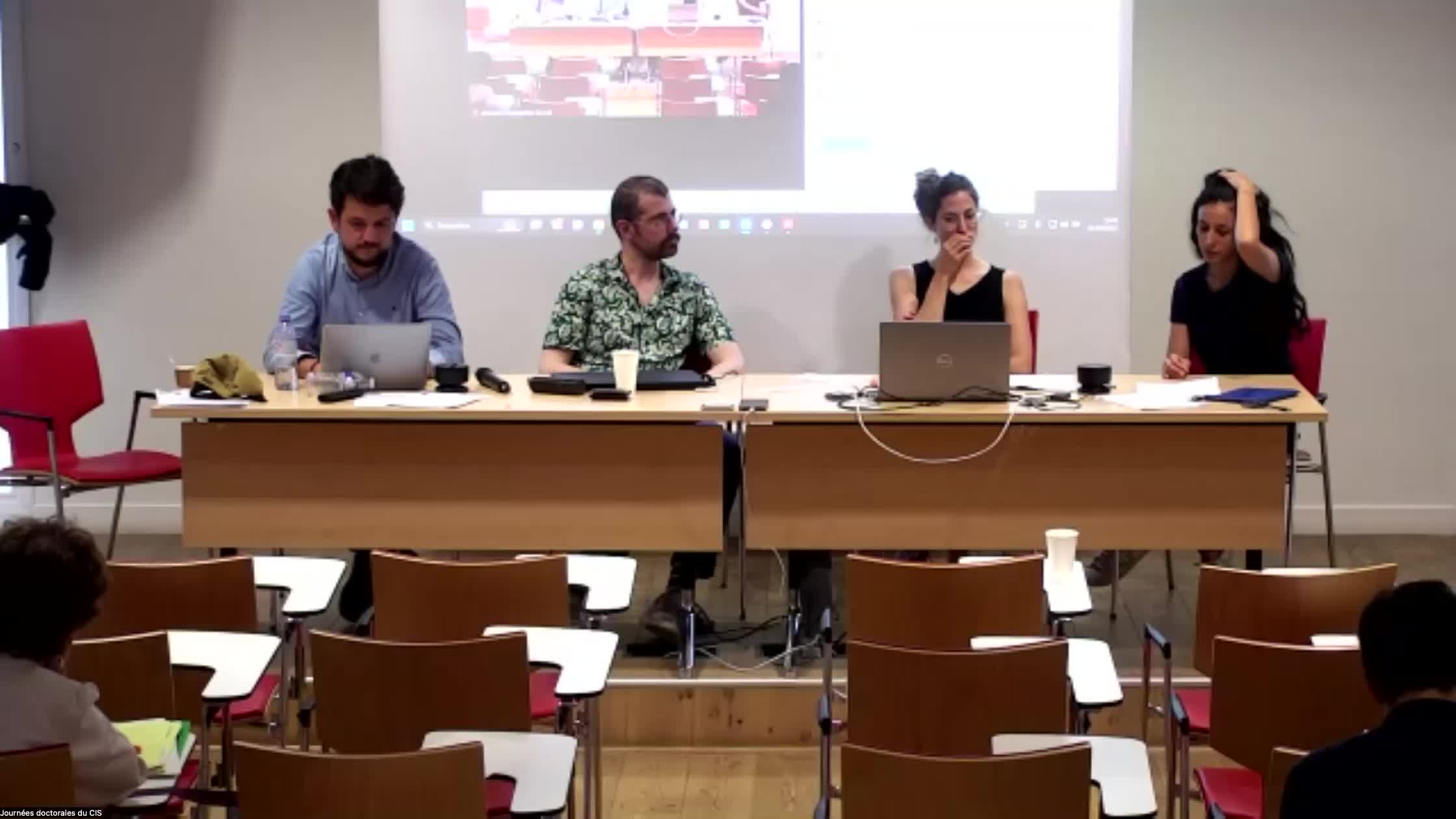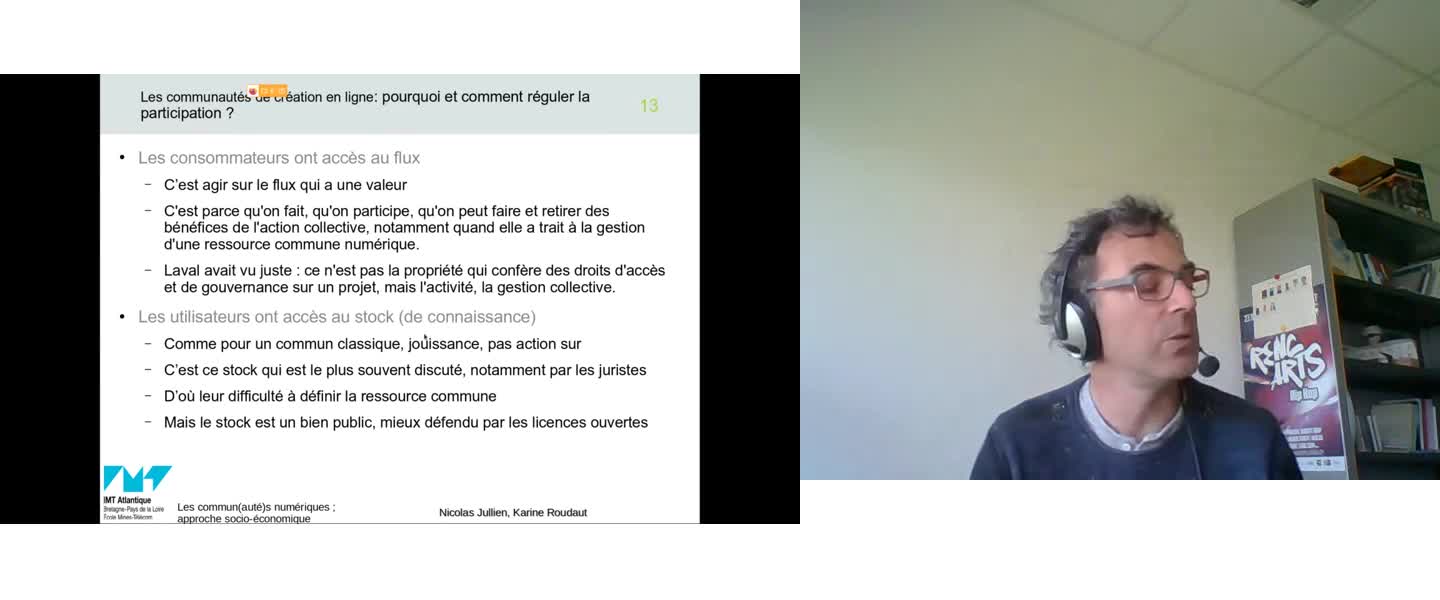Notice
An archaeology of digital attention: radar, war, and the birth of ubiquitous vigilance
- document 1 document 2 document 3
- niveau 1 niveau 2 niveau 3
Descriptif
An archaeology of digital attention: radar, war, and the birth of ubiquitous vigilance
EN. Attention is historically-specific, the product of human and nonhuman elements working in concert. Often the design of these elements’ interaction responds to specific moments and crises (spiritual, political, economic, etc.) which then shape other, diverse spheres of practice and technology. In this presentation I examine one such specific mode of attention, “electronic vigilance”, and is creation through the conditions of twentieth-century warfare. The rise of jets, long distance high-power ballistics, atomic weapons, and a “Cold War” with no planetary limits on the likely time and place of mass destruction, mobilised the invention of a new kind of human-machine system, the digital ecosystem. Elements in the system devised to meet this open-ended threat included magnetic core memory, touch-screen technology, computer graphics, real-time digital networks and, most essentially, a user who practiced perpetual vigilance. The history of this user and the modes of attention they practice offers resources for thinking critically about the modes of attention practiced in digital ecosystems today.
Thème
Sur le même thème
-
Quels publics pour la vulgarisation scientifique en ligne ?
BoissonneauThomasLa vulgarisation scientifique représente depuis longtemps un moyen de transmettre la culture scientifique à des publics qui ne font pas partie du monde académique. Dans le courant des années 2010,
-
Médiation numérique et accès sensible aux fonds exposés de la Bibliothèque des Dominicains
Réach-NgôAnneCasinRémyGUILLON FONTAINE Françoise, GREBENIEFF Cédric, MARTINEZ Marina, MONTCHAUD Fabienne, ROBINE Loïc (mars 2023)
-
Participation et citoyenneté en régime numérique : vers de nouvelles dynamiques de recherche ? Vidé…
MabiClémentStephanGaëlJouëtJosianeHermsKaterinQuirogaCatherineMobilisées en politique depuis plusieurs décennies (Vedel, 2006), les technologies de l’information et de la communication numérique (TICN), et notamment internet et le web connaissent au tournant des
-
“Will the European Union build the Data Commons?”
KellerPaulLa question des communs numériques et de la connaissance (CNC) a bénéficié de nombreux travaux de recherche la fois théoriques (Lessig 2005 ; Aigrain 2005 ; Benkler 2007 ; Le Crosnier 2015) et
-
Quoi de neuf du côté des Fake News ?
Depuis la campagne électorale américaine de 2016, le débat public autour des "Fake News" s'intensifie. Mais de quoi parle-t-on exactement? Quelles sont leurs caractéristiques, et quels sont leurs
-
Numérique et démocratie
Alors que la naissance de l'internet a été accueillie comme un nouvel espoir, tant par les milieux économiques que par le secteur associatif, les journaux bruissent actuellement d'un rejet massif.
-
L'éthique à l'épreuve du transhumanisme en santé
Dans sa communication, David Gruson insiste sur le fait que le risque éthique principal associé à l’intelligence artificielle dans le système de santé français est qu’elle n’est pas suffisamment
-
Loger mobile ? ou Habiter dans le mouvement. Enveloppes ou propagations. Habitèle ou réseaux
Habiter, c'est approprier et se coupler à une enveloppe. Les enveloppes que sont l'habit et l'habitat se sont étendues au XXe siècle en habitacle et au XXIe en habitèle. Nous devons pouvoir habiter le
-
Faire atterrir les Communs numériques. Des utopies métaphysiques aux nouveaux territoires de l’hété…
Logiciels libres et Open Source ; projets collaboratifs comme Wikipédia ou Open Street Map ; œuvres culturelles partagées sous licence Creative Commons : autant d’exemples de Communs numériques qui
-
Politiques des communs numériques
JullienNicolas« Qu’est-ce qu’un commun numérique de connaissance ? » La gestion collective d’une ressource par certains, qui permet de la préserver pour tous, a été associée à la notion de « commun », telle qu
-
Les pratiques numériques en contexte
BalleysClaireLes pratiques numériques en contexte. La portée heuristique des méthodes ethnographiques pour étudier la circulation des pratiques interactives et performatives entre espaces médiatisés et
-
Les jeudis du Grhapes 2021-2022 Handicap, Éducation et Numérique
Les jeudis du Grhapes « Handicap, Éducation et Numérique » 14 avril 2022 Marion Fabre, MCF en sciences de l’éducation et psychologie Victoire Bajard, psychomotricienne à l’Institut Fandre (Reims)













